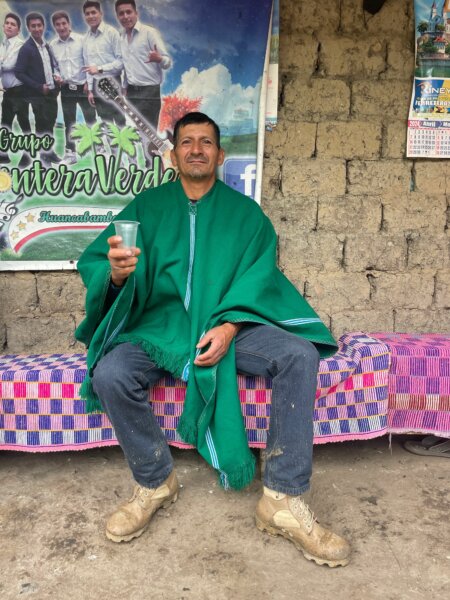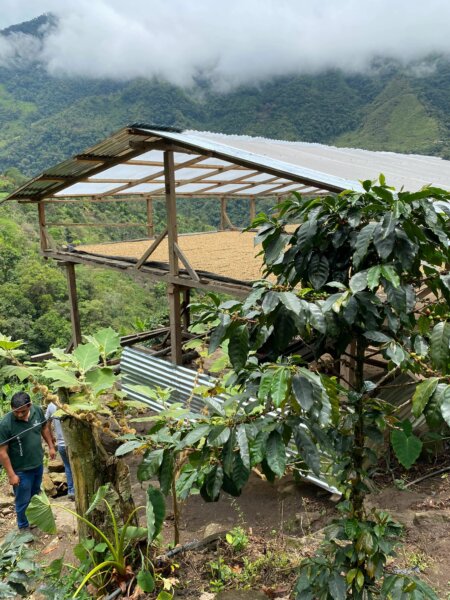It’s officially go-time in Peru. Our sourcing team spent the last few months meeting with supply chain partners across the country to plan for the 2024 season. Harvest started early in most of the country. We expect higher quality than we did in the last season as the drought that affected cherry ripening in some regions in 2023 has come to an end.
The C market, and, as a result, local parchment prices, have been extremely volatile since mid-July, adding complexity to our sourcing strategy. In the current local market, producers have many options for selling their coffee at high prices, often receiving instant payment with minimal quality standards. We are committed to paying competitive prices for the coffees that meet our quality standards and expectations as well as creating the most competitive parchment markets we can in the regions in which we work.
Perus will be going afloat earlier than ever, with first containers scheduled to ship to New Jersey & California this month.
Peru is home to Red Fox’s deepest roots and some of our most important relationships on the globe. Right now, we’re focusing on those in Cusco in the South and Cajamarca in the North. Both present unique value propositions and ideal keystones for your fall and winter menus.
Cusco

When we launched Red Fox, we made Cusco the center of our work. Not only were the coffees remarkable, it was a region in which we could have an outsized positive impact on the fiscal sustainability of Cusco’s many smallholder communities, helping smaller, newer groups gain financing and access stable, high prices.
With soaring altitudes exceeding 2,000 masl and classic varieties, Cusco coffees have always been spectacular from a quality perspective, but because Cusco’s coffee-producing subregions are extremely remote and physically hard to access, this region saw a profound lack of specialty market access.
Now, over a decade later, we’re proud to say these coffees have global market appeal and producers here benefit immensely from competition for their outturns.
It’s impossible to characterize Cusco’s flavor as a whole since the region is immensely diverse. The coffees are all excellent, serving a wide array of profiles suitable for a comprehensive range of menu positions.
When we cup Calca coffees at the beginning of the season, they start off tasting very round and sweet. When they arrive, they clarify and deepen, gaining subtle floral notes, not like a washed Ethiopian, but fully clear like peach blossom or cherry blossom. That goes along with a honey and yellow fruit character like ripe peach and mango. The cups are perfectly articulate, showcasing the work the producers have done: to pick cherry at optimal ripeness, process cleanly, and dry slowly. What you get is profiles that are profoundly expressive of their terroir and the work that went into them—the thing we prize above all at Red Fox.
Southwest, the coffees ranging across Santa Teresa’s producing regions include some of Cusco’s peak acidity and general brightness. Cara Cara and clementine sparkle on the high end while ripe mango and turkish apricot character provide the platforms across the flavor spectrum and sweetness through the finish. This area produces fruit-driven coffees with tremendous complexity.
Cajamarca

Meanwhile, we came into relationships in the North that made it clear we could add value by providing stable, lucrative partnerships to producers who weren’t getting those needs met elsewhere. Cajamarca in Northern Peru became part of our work in 2017. Much more easily accessible than many regions in which we work, Cajamarca offers clear quality and logistical benefits.
Flavor-wise, Cajamarca coffees tend bright and sweet, with high tropical citrus notes like sweet lime and Meyer lemon, subtle but distinct florality like peach blossom and apple blossom, and sweetness like honeys ranging from light to dark. The climate tends cool and humid, slowing both cherry maturation and drying for the fullest flavor development possible.
Cajamarca is rich in all the things that make for superb coffee. Quality is fantastic as detailed above, and access is profoundly developed in comparison to the regions we usually gravitate towards.
Every year’s visit to Cajamarca brings new, positive developments. Local producers work to improve their coffee each year, replacing Catimore with other varieties that offer better cup quality, improving cultivation techniques, increasing productivity through more spacing between plants, investing in processing infrastructure, and more.
